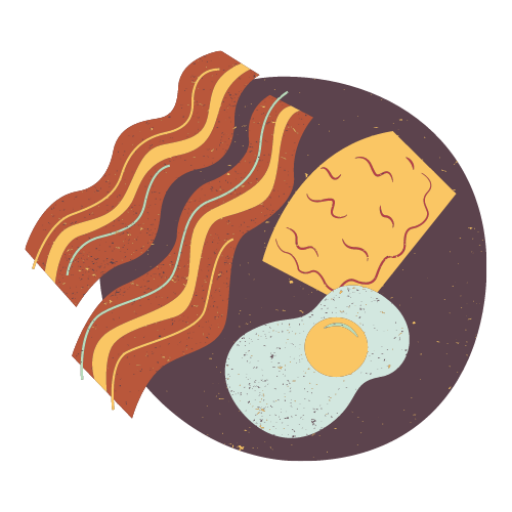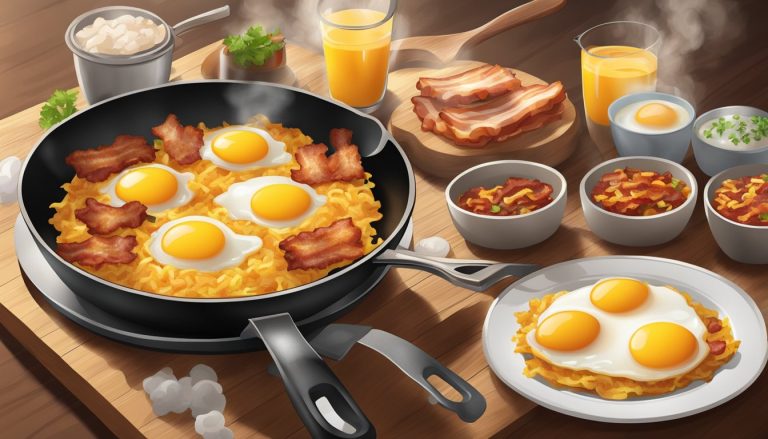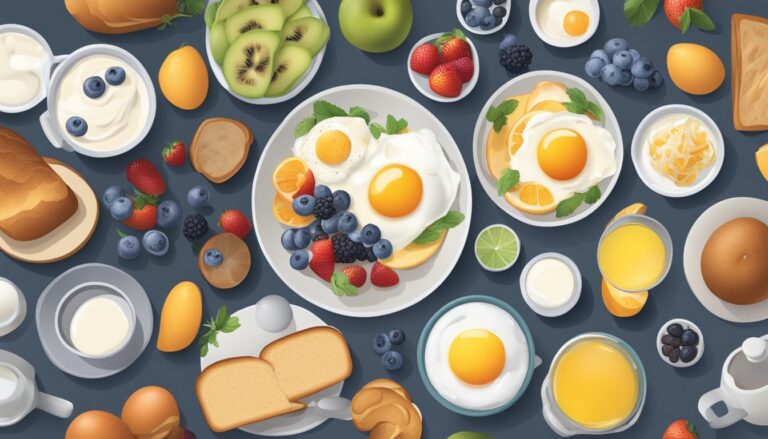Breakfast sets the tone for the day, and choosing low-calorie options can support weight management goals without sacrificing flavor or satisfaction. These 15 breakfast recipes offer delicious, nutritious ways to start your morning while keeping calorie counts in check. Each recipe is naturally low in calories, making them ideal choices for those looking to maintain or lose weight without feeling deprived.
From vibrant smoothie bowls packed with berries to savory egg white scrambles filled with vegetables, these recipes prove that healthy breakfasts can be both quick and tasty. Whole grains, lean proteins, and fresh fruits feature prominently, providing essential nutrients and lasting energy. By incorporating these low-calorie breakfast ideas into your routine, you can enjoy a variety of flavors while supporting your overall health and wellness goals.
Understanding Low-Calorie Breakfasts

Low-calorie breakfasts provide essential nutrients while keeping energy intake in check. They help kickstart metabolism and set a positive tone for the day’s eating habits.
The Basics of a Low-Calorie Meal
A low-calorie breakfast typically contains 200-300 calories. It should include protein, fiber, and complex carbohydrates to promote satiety and steady energy release.
Lean proteins like eggs, Greek yogurt, or cottage cheese are excellent choices. Whole grains such as oatmeal or whole wheat toast provide fiber and nutrients.
Fresh fruits and vegetables add volume, vitamins, and minerals without many calories. Berries, apples, spinach, and tomatoes are nutritious options.
Portion control is key. Using smaller plates and measuring ingredients can help manage calorie intake effectively.
Benefits of a Healthy Breakfast
A nutritious, low-calorie breakfast supports weight management by reducing overall daily calorie consumption. It helps prevent overeating later in the day.
Eating breakfast boosts cognitive function and concentration. It provides the brain with glucose, enhancing memory and problem-solving skills.
Regular breakfast eaters often have better nutrient intake. They tend to consume more fiber, vitamins, and minerals throughout the day.
A balanced morning meal stabilizes blood sugar levels. This can improve mood and energy, reducing irritability and fatigue.
Breakfast habits are linked to long-term health. Consistent, healthy breakfasts may lower the risk of obesity, heart disease, and type 2 diabetes.
Grains-Based Breakfast Ideas

Grains provide a nutritious foundation for low-calorie breakfasts. These versatile ingredients offer fiber, vitamins, and sustained energy to start the day right.
Satisfying Oatmeal Variations
Oatmeal serves as an excellent base for countless low-calorie breakfast options. Plain oats contain just 150 calories per cup cooked. Add flavor and nutrition with fresh or frozen berries, a sprinkle of cinnamon, or a dollop of Greek yogurt.
For a protein boost, stir in egg whites while cooking. This adds fluffiness and around 4 grams of protein per egg white used. Savory oatmeal is another tasty option – top with a poached egg and steamed vegetables for a hearty meal under 300 calories.
Steel-cut oats offer a chewier texture and take slightly longer to cook. Prepare a large batch at the start of the week for quick reheating on busy mornings.
Homemade Low-Cal Granola
Store-bought granola often contains hidden sugars and fats. Making your own allows full control over ingredients and portions. Start with a base of rolled oats and add nuts, seeds, and dried fruit.
Use egg whites or applesauce as a binder instead of oil to keep calories low. Sweeten naturally with mashed banana or a small amount of honey. Bake at a low temperature, stirring occasionally, until golden and crisp.
A quarter-cup serving of homemade granola typically contains 100-150 calories. Enjoy it with milk, sprinkled over yogurt, or as a topping for fresh fruit.
Banana Oatmeal Creations
Bananas and oats pair perfectly in low-calorie breakfast recipes. Mash a ripe banana into your oatmeal while cooking for natural sweetness and creaminess. This adds only about 100 calories and provides potassium and vitamin B6.
Try banana oatmeal pancakes: Blend oats, banana, egg whites, and a splash of milk. Cook like regular pancakes for a protein-packed meal around 250 calories per serving.
For a quick no-cook option, mix mashed banana with rolled oats and let sit overnight in the refrigerator. In the morning, you’ll have a creamy, pudding-like breakfast ready to eat.
Egg-Centric Dishes
Eggs are a versatile and nutritious ingredient for low-calorie breakfasts. These protein-rich dishes offer satisfying options that can be customized with various herbs, spices, and vegetables to suit different tastes and dietary needs.
Scrambled Eggs Revamped
Scrambled eggs can be elevated with simple additions. Mix in diced bell peppers, onions, and spinach for added nutrients and flavor. Use cooking spray instead of oil to keep calories low. Season with herbs like chives or dill for a fresh taste.
For a Mediterranean twist, add crumbled feta cheese and chopped tomatoes. This adds tangy flavor without significantly increasing the calorie count.
To make the eggs extra fluffy, whisk in a splash of unsweetened almond milk before cooking. Cook over medium-low heat, stirring gently, for creamy results.
Shakshuka with a Twist
Shakshuka, a Middle Eastern dish, features eggs poached in a spicy tomato sauce. For a low-calorie version, use less oil and more vegetables. Start with a base of diced onions, garlic, and bell peppers.
Add canned tomatoes, cumin, paprika, and cayenne for flavor. Simmer until the sauce thickens, then create wells for the eggs. Crack eggs directly into the sauce and cover until the whites set but yolks remain runny.
Garnish with fresh parsley and serve with a small portion of whole grain bread. This protein-rich meal is filling and nutritious, with a balance of flavors and textures.
Baked Eggs with Spinach
Baked eggs offer a hands-off approach to cooking. Preheat the oven to 375°F (190°C). In individual ramekins, layer sautéed spinach seasoned with garlic and a pinch of nutmeg.
Crack an egg into each ramekin. Season with salt, pepper, and a sprinkle of low-fat cheese if desired. Bake for 10-12 minutes, until egg whites are set but yolks are still soft.
This dish is high in protein and iron from the eggs and spinach. It’s easily customizable – try adding sliced mushrooms or diced tomatoes for variety.
Protein-Packed Egg Muffin Cups
Egg muffin cups are perfect for meal prep. Whisk together eggs, egg whites, and a splash of milk. Add chopped vegetables like spinach, bell peppers, and onions.
Spray a muffin tin with cooking spray. Pour the egg mixture into each cup, filling about 3/4 full. Bake at 350°F (175°C) for 20-25 minutes until set.
These portable egg cups can be made in advance and reheated for quick breakfasts. They’re high in protein and low in calories, making them ideal for weight management.
Experiment with different vegetable combinations. Try adding lean turkey or chicken for extra protein. These versatile muffins can be enjoyed hot or cold.
Healthy Pancake and Waffle Options

Pumpkin pancakes and chickpea waffles offer nutritious twists on classic breakfast favorites. These options pack more nutrients and fiber while keeping calories in check.
Pumpkin Pancakes Recipe
Pumpkin pancakes blend flavor and nutrition. Mix whole wheat flour, pumpkin puree, eggs, milk, and spices like cinnamon and nutmeg. Add a touch of maple syrup for sweetness.
Cook on a griddle until golden brown. The pumpkin adds moisture, allowing for less oil in the recipe. It also provides vitamin A and fiber.
Top with Greek yogurt and a sprinkle of chopped nuts for extra protein. Fresh berries make a great low-calorie addition.
Chickpea Waffles for All
Chickpea waffles offer a protein-rich, gluten-free alternative. Blend chickpea flour, eggs, milk, and a pinch of salt. Add baking powder for fluffiness.
Pour the batter into a waffle iron and cook until crisp. These waffles have a nutty flavor and satisfying texture.
Serve with a dollop of unsweetened applesauce or fresh fruit compote. For savory options, top with sliced avocado and a poached egg. Chickpea waffles provide fiber, protein, and complex carbohydrates, making them a filling breakfast choice.
Toasts and Toppings

Toast provides a versatile base for low-calorie breakfast options. With the right toppings, you can create satisfying and nutritious meals without excess calories.
Avocado Toast Variants
Avocado toast remains a popular choice for health-conscious eaters. A basic version uses whole grain bread topped with mashed avocado, salt, and pepper. For added flavor and nutrition, try these variations:
Tomato and herbs: Top avocado toast with sliced cherry tomatoes and fresh herbs like basil or cilantro.
Egg and arugula: Add a poached or over-easy egg and a handful of arugula for extra protein and greens.
Feta and cream cheese: Blend feta and non-fat cream cheese for a creamy, tangy spread.
Greek-inspired: Top with sliced cucumber, red onion, and a sprinkle of feta cheese.
For a lower-calorie option, use thin slices of bread or try an open-faced sandwich on one slice. Experiment with different whole grain breads for varied textures and flavors.
Refreshing Breakfast Bowls

Breakfast bowls offer a cool, revitalizing start to the day while keeping calories in check. These customizable creations blend nutritious ingredients into satisfying morning meals.
Acai Bowl: How to Keep It Low-Cal
Acai bowls combine the antioxidant-rich acai berry with other fruits and toppings. To maintain a low-calorie profile, use unsweetened acai puree as the base. Mix it with a small amount of low-fat Greek yogurt for creaminess and protein.
Choose fresh berries, sliced banana, or diced mango as toppings. These add natural sweetness without excess calories. Sprinkle a tablespoon of chia seeds or chopped nuts for healthy fats and crunch.
Avoid high-calorie additions like granola, honey, or coconut flakes. Instead, try a dusting of cinnamon or a few cacao nibs for flavor. Portion control is key – aim for a bowl size of 1 to 1.5 cups.
For extra volume without calories, blend in ice or frozen cauliflower with the acai. This creates a thicker, more filling bowl.




